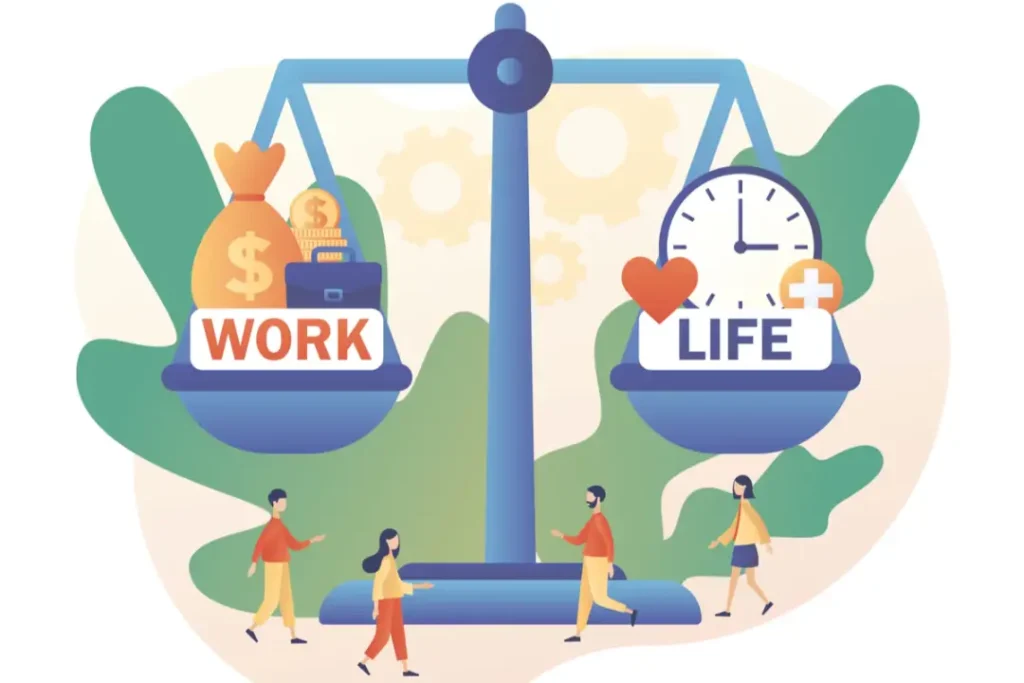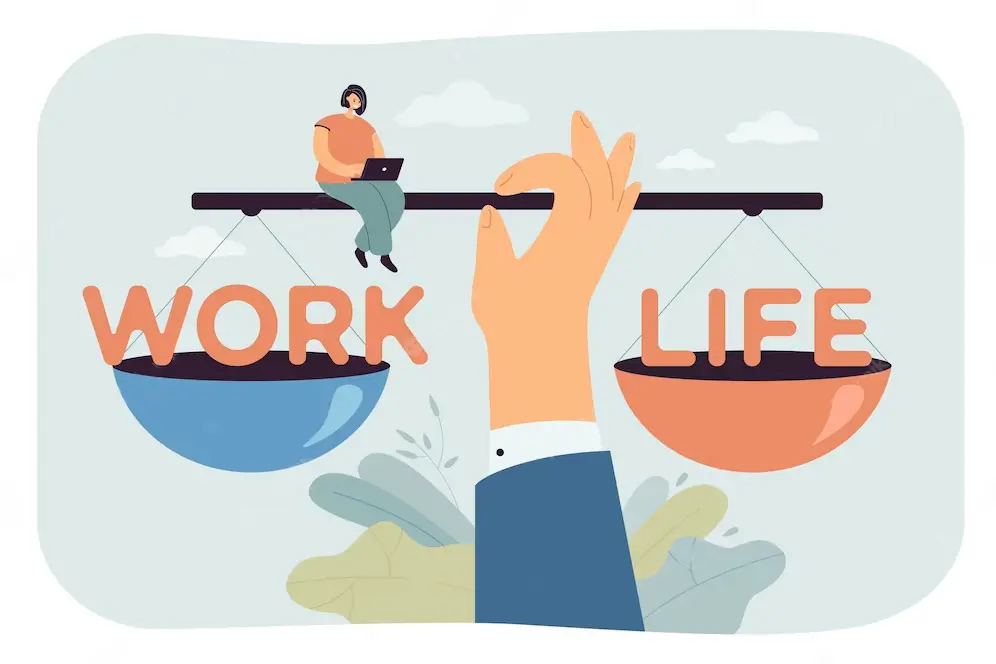Maintaining a healthy work-life balance is crucial in today’s fast-paced world. But how do we achieve it? Enter the work-life balance planner. In this comprehensive guide, we’ll explore everything you need to know about these planners, from their importance to how to use them effectively.
Understanding Work-Life Balance Planner
Work-life balance is the equilibrium between professional responsibilities and personal life. It’s about ensuring that neither aspect overwhelms the other, leading to a fulfilling and stress-free lifestyle.
Benefits of Maintaining Work-Life Balance
A balanced life offers numerous benefits, including improved mental and physical health, enhanced relationships, and increased productivity. It helps you feel more in control and less stressed.
Also Read: Exploring Dani Pettrey Books: Unveiling the Captivating 5 Valor Series & More
Signs of an Imbalanced Work-Life
Physical and Mental Health Symptoms
Chronic fatigue, insomnia, and frequent illnesses can be signs that your work-life balance is off. Mentally, you might experience anxiety, depression, or a constant feeling of being overwhelmed.
Impact on Personal and Professional Life
An imbalance can strain relationships, reduce job satisfaction, and even lead to burnout. It’s crucial to recognize these signs early and take corrective action.
Features of an Effective Work-Life Balance Planner
Customizable Templates
A good planner should offer customizable templates that cater to your specific needs. Whether it’s daily, weekly, or monthly planning, having the flexibility to tailor your planner is essential.
Integration with Digital Calendars
Seamless integration with digital calendars like Google Calendar or Outlook ensures that all your commitments are in one place, preventing overlaps and missed appointments.
Goal Setting and Tracking
Setting clear, achievable goals and tracking your progress helps maintain focus and motivation. Look for planners that offer these features to keep you on track.
Choosing the Right Work-Life Balance Planner
Assessing Personal Needs
Everyone’s needs are different. Some may prefer a simple to-do list, while others need detailed time-blocking. Assess your personal requirements before choosing a planner.
Comparing Different Planners
Research and compare different planners. Look for reviews, features, and pricing to find the best fit for you. Whether you prefer digital or paper planners, ensure it align with your lifestyle.
Setting Up Your Work-Life Balance Planner
Initial Setup
Start by setting up your planner. Input all your regular commitments, such as work hours, family time, and self-care activities. This initial setup lays the foundation for effective planning.
Personalizing Templates
Customize your planner templates to reflect your unique schedule and priorities. This personalization makes your planner more relevant and easier to use.
Daily Planning for Work-Life Balance
Prioritizing Tasks
Each day, list your tasks in order of priority. Focus on high-impact tasks that contribute to your goals and delegate or postpone less critical activities.
Allocating Time for Work and Personal Activities
Divide your day into blocks for work and personal activities. Ensure you allocate time for breaks and leisure to avoid burnout.
Weekly and Monthly Reviews
Evaluating Progress
Regularly review your progress. Weekly and monthly evaluations help you stay on track and make necessary adjustments to your plans.
Adjusting Plans as Needed
Flexibility is key. Adjust your plans based on what’s working and what’s not. This adaptability ensures you remain productive and balanced.
Tips for Effective Time Management
Techniques and Strategies
Implement time management techniques like the Pomodoro Technique or time-blocking. These strategies help you stay focused and efficient.
Avoiding Procrastination
Identify and eliminate distractions. Set specific times for focused work and stick to them to combat procrastination.

Incorporating Self-Care into Your Planner
Scheduling Downtime
Self-care is vital. Schedule regular downtime in your planner to recharge and maintain your well-being.
Importance of Regular Breaks
Taking short, regular breaks boosts productivity and prevents fatigue. Plan these breaks into your day.
Balancing Work and Family Life
Strategies for Family Time
Dedicate specific times for family activities. This commitment strengthens relationships and ensures quality time with loved ones.
Managing Work Commitments
Set boundaries for work commitments. Avoid letting work spill over into personal time by sticking to your schedule.
Using Technology to Enhance Work-Life Balance
Apps and Tools
Leverage apps and tools designed to help with time management and productivity. Apps like Todoist or Trello can enhance your planning.
Automation and Reminders
Use automation and reminders to streamline tasks. This reduces the burden of remembering every detail and keeps you organized.
Dealing with Unexpected Changes
Flexibility in Planning
Life is unpredictable. Be flexible with your plans to accommodate unexpected changes without getting stressed.
Handling Emergencies
Have a contingency plan for emergencies. This preparedness helps you handle disruptions smoothly.
Maintaining Consistency
Building Habits
Consistency is key to success. Build habits by following your planner daily and making it a part of your routine.
Long-term Benefits
The long-term benefits of using a work-life balance planner include reduced stress, improved productivity, and a healthier lifestyle.
Conclusion
Maintaining a healthy work-life balance is essential for a fulfilling life. A work-life balance planner is a powerful tool to help you achieve this balance. Start using one today and experience the positive changes it brings to your life.
FAQs
Q: What is a work-life balance planner?
A work-life balance planner is a tool that helps you organize and manage your time effectively, balancing work and personal life.
Q: How can I choose the best planner for me?
Assess your needs and compare different planners based on features, reviews, and pricing to find the best fit for you.
Q: Can a work-life balance planner help reduce stress?
Yes, by organizing your tasks and scheduling downtime, a planner can help reduce stress and improve productivity.
Q: How often should I update my planner?
Update your planner daily for tasks and weekly or monthly for long-term goals and reviews.
Q: Are digital or paper planners better for work-life balance?
It depends on personal preference. Digital planners offer integration and automation, while paper planners provide a tactile experience.




